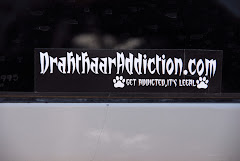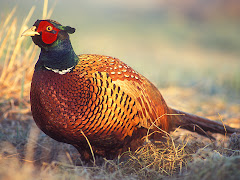It's about time we discuss socialization,its importance, and play behavior. There are some people that may say this is all pointless talk. Those of us that have Drahthaars, that we have taught to be social, playful and well mannered dogs, would disagree I am sure.
Some see these as hunting dogs and that is all. Others see a hunting partner, home companion and travel buddy. Who wants to deal with a dog that doesn't get along well with other people or dogs? Either hunting or hanging around with others, it makes life a lot less stressful with a well mannered, socialized dog. All breeds need to be socialized. Some take to it with ease, some need coaxing, others need to be taught how to socialize and play appropriately. Drahthaars are one of those breeds that could use the extra help in the social department. They are high drive hunters with superb prey instincts. They work hard and are good at it too. They know it! Them knowing this tends to make most think in Alpha terms. They want to be the top dog, and choose not to engage in play and socializing. It is our job as handlers and owners to nip this in the bud. We are the alpha, we are in charge of everything! Appropriate play is important, when socializing your dog with other dogs, it is always best to have the other dog owners around and watching every move every second. Those that are experienced with dogs know exactly what the signs are, here is a little info and some tips.
Understanding social play behavior,dominant and nervous interaction will help in all aspects of handling your dog. There are basically play games that canines engage in.
The Hunt: A chasing game usually, one dog is acting "prey" and the other acting "hunter".
Most commonly the dogs will trade roles again and again. Often they will pause, check on each others emotional energy and verify that they are still "playing". You will most likely witness play bowing,body checks, faces are relaxed,"smiling", eyes are normal and not dilated. The acting "prey" may fall to the ground, allow themselves to be rolled to the ground,grabbed by the neck and play wrestle or fight. All this is acceptable play behaviour unless the roles never switch, you can see one dog getting to serious, barking or growling, baring teeth,playing to rough or not pausing. Once the other dog is frightened it will take on the persona of real prey with the tail tucked, eyes wide, shaking, running fast,etc. All signs it is time to intervene.
Play Wrestling or Fighting: Mostly fake posturing,wrestling,mouthing and noises, canines will chew on each other,mumble growls, one dog may be standing above another,flashing teeth, making noise. All is well as long as the dogs inhibit their bites, and no one appears frightened or like they are trying to escape.When this becomes to serious or a dog gets frightened, it is time to intervene. Most dogs enjoy interaction, dogs that are at play will show strong signals of such.
Play bowing, stretching,role switching in hunt or fight play, taking turns,pausing to check emotions and mumble growls . Usually dogs that are in proper play mode are easily interrupted. Play is basically just practice hunting and fighting, it can escalate quickly,every dog has their limits, so be aware.
Some inappropriate things to watch for include,chasing and stalking with teeth bared,placing or attempting to place a head on the other dogs shoulders,pushing or slamming into another dog, attempting to or humping and mounting, constant barking at another dog,moving in a direct path to other dog.
Most socialization issues can be easier dealt with in the puppy stage. Puppies learn how to communicate by engaging in play with other dogs.They may not understand at first and all dogs play at different levels and use different signals. From this pup's learn what is truly threatening and what is not. They learn politeness,confidence and social skills by being like the other dogs.
It is completely unreasonable and unfair to think all dogs will get along, but with a little help and some supervision, it is possible to make a dog understand the dynamics of play and socially acceptable behavior.
Fingers Crossed
5 months ago










.jpg)


No comments:
Post a Comment